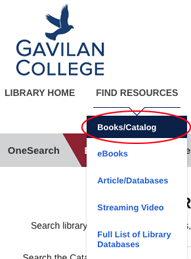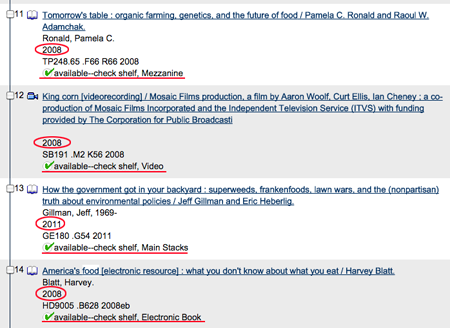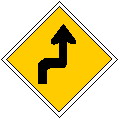| Encyclopedia articles are great for quick facts, names associated with issues, timelines and broad general descriptions.
But regular books are still the best place to find a fully-developed discussion of your topic. Books have the space to develop a topic, discuss several aspects, and go much deeper than broad general descriptions.
You don't have to read the entire book. There are tricks to using books more efficiently: - Look at the Table of Contents in the front, a list of chapters. Maybe your topic will have one chapter devoted entirely to it.
- Look at the Index at the back of the book, a list of terms covered within the book. If you can find one or more key words or terms, you can go directly to the pages listed after the term.
A book on your topic will give you ideas for specific aspects that you might be able to focus on. This is another way to narrow your topic.
You can get to the Gavilan library catalog of books by clicking on the first option in the drop-down list: Books/Catalog. Try searching for:
Genetically modified food |

|
When you click the search button, you'll get a list of every item in the Gavilan collection that has those three words in exactly that order (phrase searching) somewhere in the record for the item.
Each listing gives you the title (linked in blue), and the author just under the title. The date after the author's name is the date the author was born (1969 in #13).
Next, on a new line, is the date of publication (circled in red in the image to the right, 2011 in #13). That number below the date:
GE180.G54 2011
is the call number, the address of where the book is sitting on the shelves.
|

And the very last line in the entry is the status line, letting you know if it's available or not. It could be available, checked out, lost, still being processed, or just the generic 'not available.' This line also gives you the general area: mezzanine, main stacks, video, etc. If it says 'electronic book', that means you can get it online. |
Each bookcase in the library is marked with letters, like GA-GQ, to let you know which call numbers are shelved on that particular bookcase. First find the shelf that contains your letters (GE), then find the area of 180s, then find the G section, then to the last number, 54, like following an address from a zip code to the state to the city to a street, down to a specific house number.
But first make sure you're in the right neighborhood. Notice in the list above that the first book is upstairs on the mezzanine, the second is on the west wall with the video collection, the third is downstairs in the main stacks, and the last one is an electronic book. The reference librarian can show you how to download the book. |
| When I took this picture, this book was not on the shelf, already checked out by someone else. You can see this from the status line, underlined in blue in the image to the right. Since then, the book might have been returned and your result list will show this book as available. |
 |
|



![]()
![]()